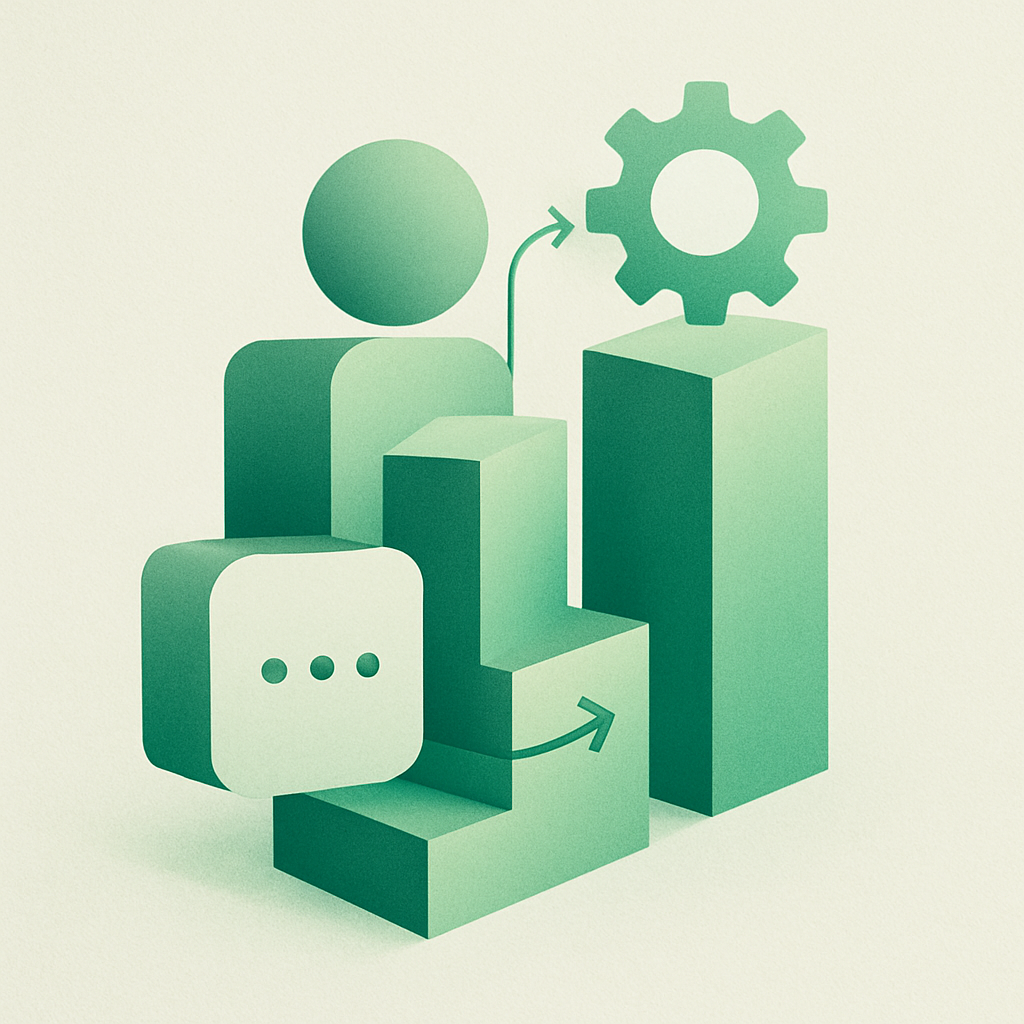What Is an AI Architect?
Introduction
As AI matures, organizations need people who can connect business needs with AI capabilities. These aren’t just developers or data scientists , they’re AI Architects. Some are high-level technical leaders like CIOs, Heads of AI, or CTOs. Others are operational experts who deeply understand how their teams work, and use that knowledge to shape AI-powered systems, apps, and workflows that scale.
This article dives into the AI Architect persona, exploring who they are and what their role looks like on a day-to-day basis. We’ll look at the common challenges they face when trying to build AI-powered apps across their organization, from adapting to different team needs to managing complex development cycles.
We’ll also break down how AI agents and agent orchestration help solve these challenges, making it easier to create scalable, efficient workflows. Finally, we’ll highlight real-world examples of document workflows that AI Architects can automate, including RFP responses and technical documents.
For more information on how AI agents help complex document generation processes, see our guide here.
Who Is an AI Architect?
An AI Architect is not always a single job title, it’s a persona. These are decision-makers and technical leaders responsible for planning, building, and deploying AI-powered apps across the company.
Typical technical roles include:
- CIO / Group CIO / Chief Information & Digital Officer
- CTO / Head of Digital / Head of IT & Services
- Head of AI / Head of Data & AI / Chief Data Officer
- Product Owners or AI Experts
The AI Architect’s Mission
They focus on how AI applications can scale across teams. While a data scientist might train a single model, the AI Architect ensures that the entire business can create, test, and iterate AI-powered solutions quickly, without reinventing the wheel for each department.
In other words, they build frameworks and apps that others can use. Think of them as enablers: they design workflows so that sales, finance, or operations teams can leverage AI without deep technical expertise.
A Day in the Life of an AI Architect
What does an AI Architect actually do? Their day-to-day revolves around three core priorities:
1. Translating Business Needs into AI Apps
A CIO or Head of AI might start the day by meeting with business teams (e.g., sales or finance) to understand pain points like:
- “How can we respond to RFPs faster?”
- “How do we automate these recurring security questionnaires?”
- “Can we generate investor-ready information memos in less time?”
The AI Architect’s job is to transform these challenges into structured workflows, mapping out which AI agents are needed and how they interact.
2. Building and Orchestrating AI Agents
Using an agentic AI approach, the architect breaks complex tasks into smaller modules (agents). For example:
- One agent gathers relevant data from internal systems.
- Another agent drafts content based on templates and company tone.
- Another agent validates and formats outputs.
This orchestration allows them to build AI-powered apps for specific needs, like an RFP response generator or a credit note automation tool.
3. Testing, Iterating, and Scaling
An AI Architect doesn’t just build once. They test, iterate, and refine these AI apps. With the right framework, they can roll out updates in days instead of months, ensuring each department’s needs are met.
Pain Points of AI Architects
While they are strategic leaders, AI Architects face real challenges:
- Difficult to adapt to all internal needs
Every team (sales, finance, operations) wants something slightly different. Building custom solutions for each is time-consuming. - Long development cycles
Creating advanced AI apps can take months, especially if they require multiple integrations and compliance checks. - Complexity of advanced AI systems
Orchestrating multiple AI agents, data pipelines, and business rules is technically challenging without a clear framework.
How AI Agents Solve These Challenges
The rise of agentic AI changes the game. Instead of coding everything from scratch, AI Architects can build modular, reusable apps that anyone in the organization can leverage.
Benefits of This Approach
- Everyone can create their own AI app
With no-code or low-code platforms, even non-technical teams can spin up AI-powered workflows. - Faster testing and iteration
Instead of a 6-month build, AI Architects can test ideas in weeks or days. - Handle complex tasks with ease
Agent orchestration means complex workflows (e.g., generating a 50-page security questionnaire) are broken down into manageable steps. - Free to build, pay when scaling
Many frameworks allow free experimentation, AI Architects can prototype without large upfront costs. - Feedback-driven evolution
The architect collects feedback from teams to continuously improve apps.
Real-World Use Cases
AI Architects are particularly valuable in document-heavy workflows, where manual work slows teams down. Some examples include, RFP response automation in which, they can analyze requirements, draft answers, and compile responses using approved content libraries, reducing manual effort by up to 90% and allowing teams to focus on final validation and strategy.
AI agents are also helping the way teams handle technical documentation by automating repetitive tasks and ensuring accuracy across complex workflows. For example, they can extract relevant information from past technical documents, compliance records, and certifications to automatically populate large portions of new documentation, reducing manual effort by up to 90%.
Why This Role Matters More Than Ever
According to industry research, agentic AI can deliver 3.5 to 6 times ROI compared to traditional AI tools. The AI Architect persona enables this success by:
- Bringing structure to AI initiatives.
- Democratizing AI, so every department can create its own apps.
- Reducing manual workloads, saving teams hundreds of hours annually.
How Thinkeo Helps AI Architects
At Thinkeo, we provide a framework designed for these personas, CIOs, Heads of AI, and Product Owners, so they can build, test, and deploy AI apps for complex document workflows.
With Thinkeo, you can:
- Build custom apps for RFPs, security questionnaires, credit notes, and more — all in hours, not weeks.
- Turn your business expertise into AI apps — design and customize workflows that fit exactly how your team works.
- Stay in control of your AI agents — manage, improve, and scale them while speeding up time-to-delivery across the business.
Conclusion
The AI Architect persona represents the strategic leaders shaping AI’s future in organizations. They’re not just implementing AI, they’re building ecosystems of agents and workflows that scale across teams.
From RFP responses to financial documents, they leverage agentic AI to automate complex tasks and give teams more time to focus on strategy. The future of AI lies in creating, managing, and guiding these agents with your domain expertise, turning AI into a powerful ally that works in your favor and drives business impact.
Want to empower your AI Architects? Explore Thinkeo’s platform and sign up for free today!





.png)